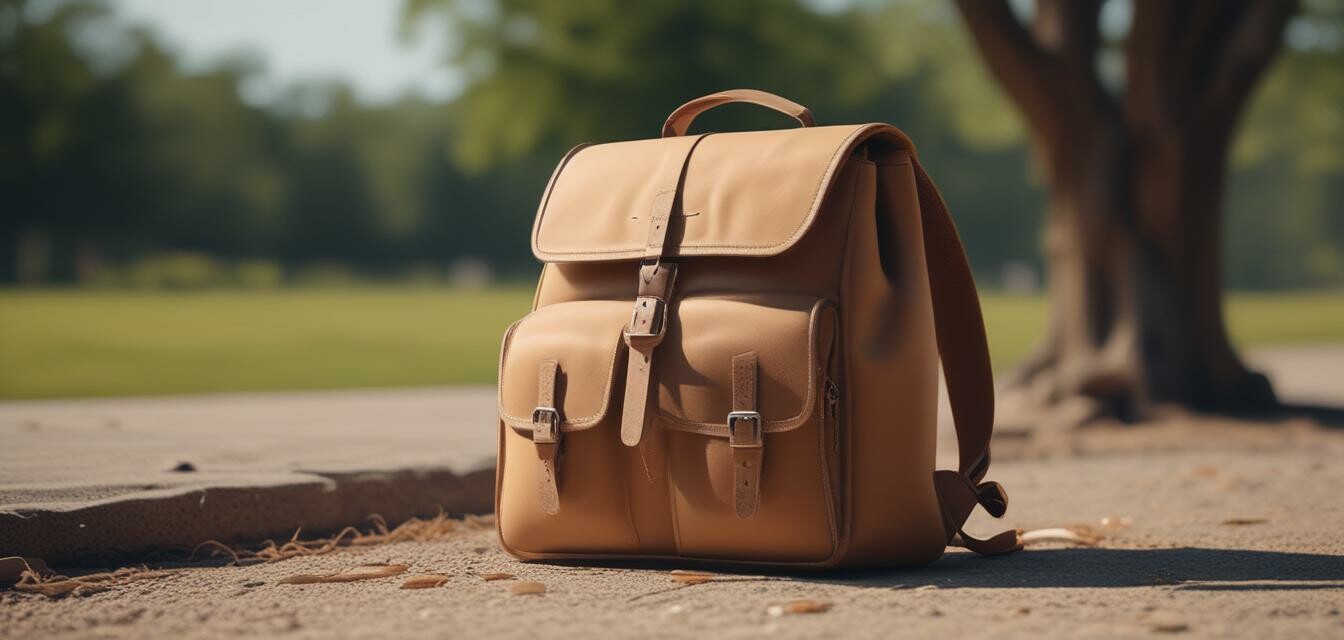
The rise of minimalist backpacks: Dakine's approach
Key Takeaways
- Minimalist backpacks emphasize simplicity, functionality, and versatility.
- Durability and style are key features that brands like Dakine focus on.
- The trend is reflective of a broader lifestyle shift toward simplicity and sustainable living.
- Consumers are seeking backpacks that can transition from outdoor adventures to urban settings.
- Innovation in design continues to play a crucial role in meeting consumer demands.
In recent years, the backpack industry has experienced a notable shift towards minimalism. As people become more conscious of their needs and the environment, the demand for backpacks that combine simplicity and functionality has skyrocketed. Dakine, known for its high-quality outdoor gear, is at the forefront of this minimalist trend, crafting backpacks that meet the evolving needs of consumers while ensuring durability and style.
Understanding the minimalist trend
Minimalist backpacks are characterized by clean lines, fewer compartments, and lightweight materials. This trend reflects a growing preference for products that are not only practical but also aesthetically pleasing. The essence of minimalism can be summed up in a few key points:
- **Less is more**: The focus is on simplicity and avoiding clutter.
- **Functionality**: Every feature serves a purpose, making the backpack versatile for various uses.
- **Lightweight materials**: Many minimalist backpacks are made from durable yet lightweight fabrics.
How Dakine embraces minimalism
As a brand that combines style with functionality, Dakine has embraced the minimalist backpack trend by incorporating various design elements that cater to modern needs. Here are some ways Dakine adapts its designs to meet this trend:
| Design Element | Description |
|---|---|
| Streamlined Design | Clean lines and simple aesthetics that appeal to modern consumers. |
| Multi-Functionality | Backpacks designed for various activities, from hiking to commuting. |
| Quality Materials | Use of durable and lightweight materials that withstand the test of time. |
| Eco-Friendly Options | Inclusion of sustainable materials that appeal to environmentally-conscious consumers. |
The impact of minimalism on backpack choices
The rise of minimalist backpacks has significantly influenced how consumers choose their gear. With the increasing value placed on sustainability and practicality, shoppers are more inclined to select backpacks that align with a minimalist lifestyle. Below are some factors to consider:
- Sustainability: Brands are leveraging eco-friendly materials to attract conscious buyers.
- Flexibility: Consumers desire backpacks that can easily transition from outdoor adventures to everyday use.
- Reduced clutter: Minimalist backpacks eliminate superfluous pockets and zippers, streamlining the user experience.
- Style choices: Sleek designs allow backpacks to fit in both casual and professional settings.
Popular minimalist backpack designs
As the minimalist backpack trend continues to grow, several design approaches are gaining popularity. Here's a look at some key styles:
- **Sling backpacks**: One-strap designs that allow for easy access and movement.
- **Rolltop backpacks**: Versatile designs that provide expandable storage options.
- **Packable backpacks**: Lightweight packs that can be folded into small sizes when not in use.
Pros
- Offers versatility for various activities.
- Encourages a more organized and clutter-free lifestyle.
- Durable materials promote longevity.
- Stylish designs suitable for various settings.
Cons
- May lack additional compartments for more extensive organization.
- Some users prefer traditional features found in regular backpacks.
Adapting to the demands of consumers
As consumer preferences shift, brands like Dakine are not merely keeping pace—they are setting the standard. Through innovative design practices, they are creating products that embody the core principles of minimalism while delivering on durability and functionality.
Responding to market demands
To stay ahead of trends, it’s crucial for brands to heed the desires of their consumers. Dakine’s approach involves:
- **Conducting market research** to understand what consumers really want in their backpacks.
- **Engaging with customers** through social media and community feedback to gather insights.
- **Testing new materials and designs** to keep product offerings fresh and relevant.
What's next for minimalist backpacks?
With the shift toward minimalism expected to continue, brands will need to innovate constantly. Consumers will look for products that align with their lifestyle choices, emphasizing quality over quantity. It’s clear that Dakine is committed to not just adapting to trends but leading the way in the minimalist backpack movement.
Staying informed about backpack trends
If you're interested in exploring more about backpack trends, consider checking our News and Trends section for the latest updates and insights. Additionally, you can dive into specific categories like Outdoor Adventure Packs and Casual Daypacks to see how Dakine and other brands are continuing to innovate.
Conclusion
The rise of minimalist backpacks marks a significant shift in consumer preferences, reflecting a desire for simplicity and efficiency without compromising on durability and style. Dakine's approach to minimalist designs showcases their commitment to quality and functionality, ensuring that adventure seekers and everyday users alike can find the perfect pack for their needs.